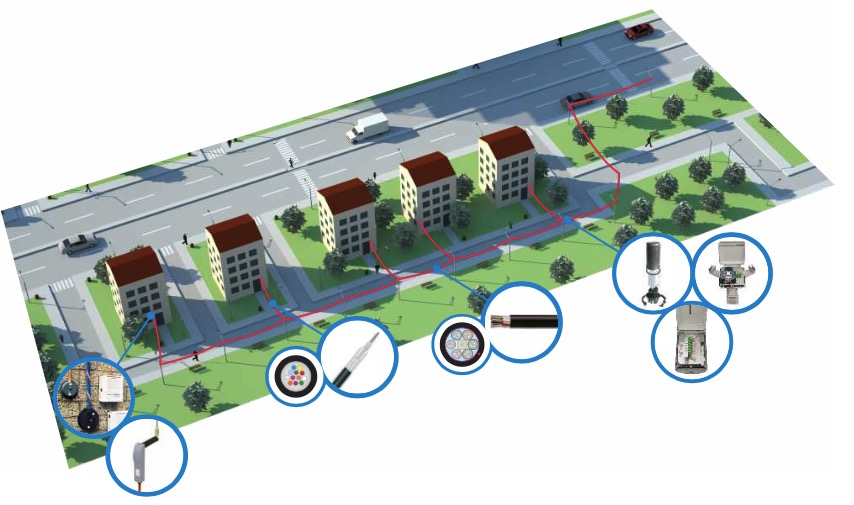
To successfully built and implement modern FTTH network you need to realize how big work must be done and especially define basic parameters of such system.
Design aspects:
At this stage you need to elaborate a conception and project which will be developed at the next stages. System must be uniformed, based on well known, checked solutions, which allows later management and maintenance.
Features that must be taken into account:
- Number of end points with small fiber count to the subscriber
- Number of branching ducts that demand fiber splicing
- Number of fibers that are required to connect all subscribers
- Project scale that covers from hundreds to thousands of subscribers at different locations
- Network topology that depends on TV and Ethernet signal providing technology
- Number of different locations that require different types of compatible networks working together
- Building of network not at operators site, which requires place to put connection points.
Logistic aspects:
- Implementationstages,coverprimarystage,developmentandnetworkexpansion
- Project scale, volume of products ordered, uniformity of technology, future access to next products belonging to the network
- Importantforprojectimplementationiscostandworkoptimizationwhichleadstominimizingofqualified
installers and also use of expensive devices - Striving to maximize prefabricated elements in deliveries
Installation aspects:
FTTH is young and still expanding solution. Installers knowledge who work in typical telecommunication market is very often incomplete, covering just particular area which can arise during bigger FTTH project implementation. To face such problems and cover all arising issues we arrange not just trainings but also project management and advice of ProjectManager. Theonewhousessuchhelpcanbesurethatallrequirementsofsystemarecovered.Additionallysuch investition is implemented in easier and faster way with costs minimization.
Project Manager also takes care of measurements and test verification.
FTTx installation technique types
To properly and easily build and run advanced FTTH networks in the early concepts must be aware of the enormity of the challenges that await us and to define the basic types and parameters of such a network.
The basic installation techniques and as well as quite different products used in this technique include:
- Direct burial
- Directional Drilling l Inside Sever
- Mole ploughing
- Trenching
- Slot Cutting l Aerial
- Semi-aerial
